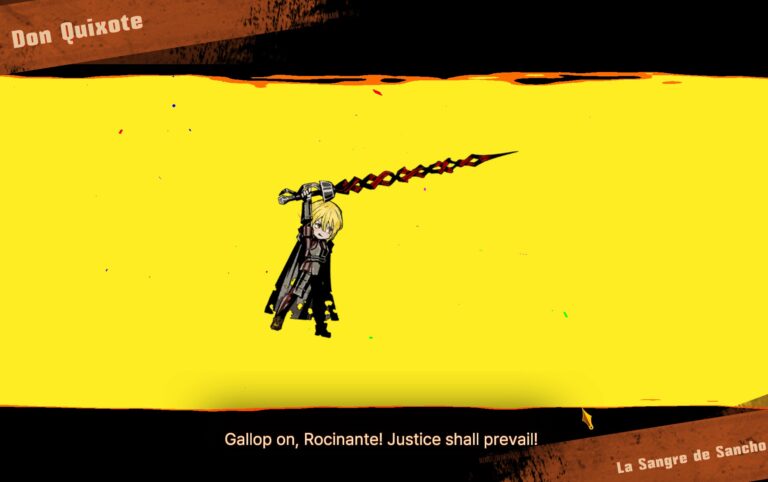Limbus Company is the third install in Project Moon’s Lobotomy Corporation world. The manager, Dante, is tasked to take his 12 sinners into the ruins of Lobotomy Corporation to uncover the Golden Boughs. To do so you’ll need to know how to use identities, EGO and fight in the tough world of “The City.” You can read more on the story if you’re interested.
In this guide we go over what Identities are, how EGO works and how the flow of combat works. By the time you reach 3-4, you’ll need to master all three to make it through.
Identities and the Gacha System in Limbus Company
Identities (ID) are alternate universe versions of the twelve sinners. The base 12 sinners are unlocked by default. You can draw IDs via the gacha system. They have three rankings: 0 (base), 00 and 000. The most powerful universal version is often considered to be 0 (base), but 000 units are often very powerful. A single 000 unit can likely carry you through chapter 1 and 2 completely without even upgrading it.
Each ID has HP, SP (sanity) and defense (the shield). They also have resistances. Resistances are VERY important, because at stage 3-4 you’ll face slash resistant enemies. Different characters have different resistances and this can make or break fights starting in chapter 3. You’ll want to switch to identities for each character based on who you’re facing in each combat.
There’s two leveling mechanics to an ID. The first is the “level” and the other is “uptie.” You level by getting XP or using tickets. You increase uptie with thread. Uptie grants additional skills. You can reach this menu by long pressing on a sinner in the sinner menu.
Note: You don’t have to draw any ID to get it, you can exchange tokens to outright buy them.
EGO
EGO this time around is special skills each sinner can use. They’re ranked ZAYIN, TETH, HE, WAW and ALEPH from weakest to strongest, although the higher the level the EGO is the riskier it is to use. You can equip and pick which EGO to bring to each fight and they’re obtained through the same gacha system / token exchange.
EGO is more rare than ID. So something to consider.
You use EGO by long pressing on the character in combat. Your EGO resources on the right. As you combat, your resources increase, enabling the use of the special EGO abilities. By chapter 2 you’ll likely need to use EGO in some fights and it’s a requirement starting in chapter 3.
EGO requires various colored resources that align to the colors of the attacks each sinner has. Make sure to build your team to generate enough resources to trigger EGO or you can’t use them!
Limbus Company Combat

You can take up to five sinners into a combat (though some fights have restrictions on fewer). The first phase of combat is rolling for speed, which determines if your character can enter into a clash (redirecting an attack). Then the manager selects which attacks each sinner will leverage.
You can click the sinner’s icon (or when they have more attack slots, the skill icon) to load their defensive skill. You long click to load a sinner’s EGO ability. The manager then drags from left to right a chain of attacks, with the color of each attack gaining a bonus when another color is linked. Each attack shows the percentage (positive or negative) applied and the manager has two choices.
In mirror dungeons & against abnormalities, you drag the attack to the opposing enemy’s attack as explained in the game. This lets each sinner pick who they target. In the chain drag scenario, the sinners auto-target.
Once the instructions are given, combat play outs and then the next turn starts again.
Combat – Staggering
Staggered is a state where a character can’t attack, receives extra damage and is generally not a good state to be in. Staggering can trigger when the stagger gate (indicated by a yellow line on the health bar) is exceeded during combat. Staggering an enemy will cause them to skip their next turn, likewise a staggered sinner will skip their next turn.
Combat – Coin Tosses and Clashes
In a clash, both sides flip coins. The winner deals damage, based on the dice roll for their attack. So for instance, in a clash if you roll 2 coins and they roll 0, you attack and then if your skill rolled 10 damage then you’d do 10 damage. If the modifier was 100%, you’d do 20 damage.
This is oversimplified though. The math is very complicated for the battles and a variety of things impact it, including sanity (which adjust chances of heads/tails on coin tosses).
Combat – Everything Counts / Team Building
So when you fight an enemy, there’s a lot going on. You’ll see your skill vs. their skill. You have the damage modifier. Then you have resistances. Community research also shows the UI doesn’t give you enough insight to determine things. So it’s much better to focus on building a great team – which can often include base characters over their alternate IDs.






